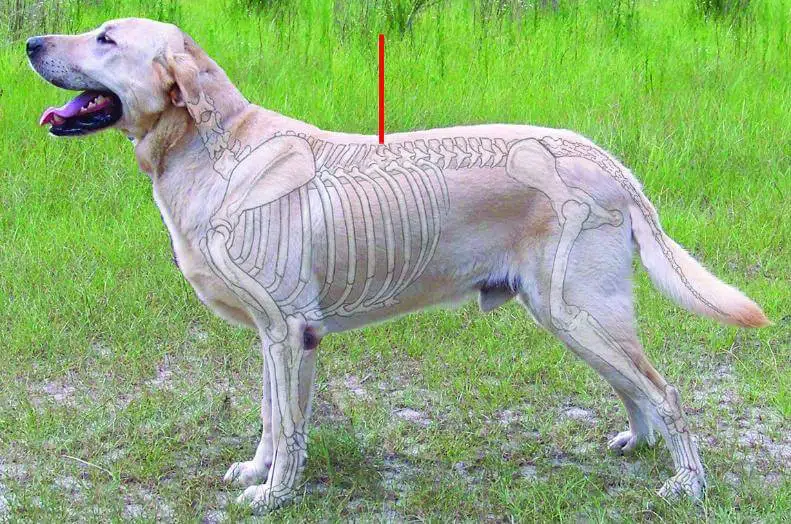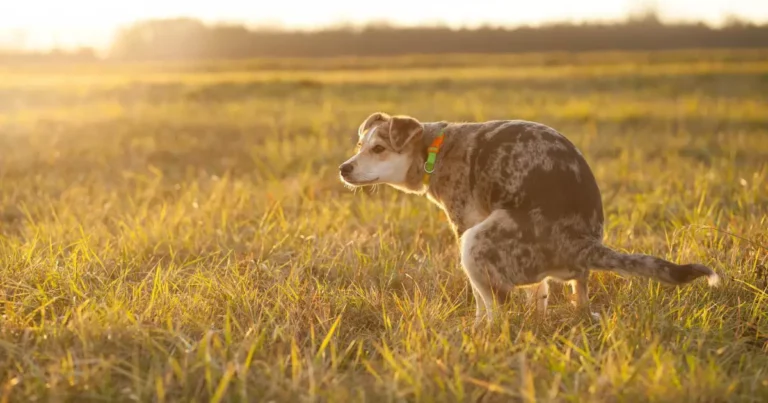Floating Rib in Dogs: Everything You Need to Know!
Dogs, much like humans, have intriguing anatomical quirks that not only pique our curiosity but also play vital roles in their overall physiology. One such quirk is the floating rib. But what exactly is a floating rib in dogs? In the simplest terms, it refers to the last rib (or ribs) that aren’t attached directly to the sternum or breastbone.
As pet owners, understanding these peculiarities can help us ensure the well-being and health of our furry friends. This post dives deep into the world of the floating rib, answering all your pressing questions and shedding light on its significance.
Key Takeaways:
- Floating ribs: not attached to the sternum.
- Vital in protecting vital organs.
- Differences and similarities with human floating ribs.
- Relevance in specific dog breeds.
Short Answer: A floating rib in dogs is the last rib, typically the 13th one, that isn’t directly attached to the sternum. Instead, it’s loosely connected, allowing it some mobility. While it’s a natural part of a dog’s anatomy, noticing its prominence or changes may warrant closer observation or consultation with a vet to ensure there aren’t any underlying health concerns.
Understanding the Anatomy of the Floating Rib in Dogs

Definition and Characteristics
The floating rib, often regarded as the last or 13th rib in many dog breeds, is unique in its structure and positioning. Unlike the preceding ribs which are anchored securely to both the dog’s spine and sternum, the floating rib only attaches to the spine.
Its free or “floating” end does not connect to the sternum or to the rib above it, giving it the flexibility that birthed its name.
Function and Importance
While it might seem like an anomaly, the floating rib serves its purposes. From a protective standpoint, it acts as a shield for certain vital organs, playing a crucial role in safeguarding a dog’s internal structures.
Additionally, its flexibility can offer more freedom of movement in specific actions or positions, aiding in a dog’s flexibility and agility.
Comparison to Human Anatomy
Humans, too, possess floating ribs – typically the 11th and 12th ribs. Like in dogs, these ribs aren’t fastened to the sternum. Instead, they end in the muscles of the lateral abdominal wall.
It’s intriguing to note that both species, despite the differences in overall anatomy and number of ribs (humans generally have 12 pairs, while dogs have 13), share this anatomical feature. It suggests an evolutionary advantage to having these flexible, free-ended ribs for both protection and mobility.
The Purpose Behind the Anatomy: Why Do Dogs Have Floating Ribs?
Just as every unique facet of an organism’s body has evolved for a reason, the presence of the floating rib in dogs is no exception. This singular rib, distinct from its counterparts, plays several roles in the canine anatomy.
Protection of Vital Organs
The primary role of any rib is protection, and the floating rib is no different in this regard. Positioned towards the rear of a dog’s ribcage, it serves as an additional shield for some of the animal’s most crucial organs, like the kidneys.
The kidneys are positioned higher in dogs than in humans, and the floating rib aids in protecting these vital organs from potential trauma.
Flexibility and Mobility
The name “floating rib” isn’t just for show. The fact that it isn’t anchored at both ends as the other ribs are provides a degree of flexibility to the dog’s lower torso.
This flexibility can be beneficial for various actions and postures dogs might take, from the way they lay curled up in a tight ball to their full stretch during a sprint or jump.
Breathing Mechanism
Another reason for the floating rib’s presence is its role in the canine breathing mechanism. The diaphragm, a primary muscle aiding in respiration, attaches to the lower ribs, including the floating rib.
When a dog inhales, the diaphragm contracts and pulls down, causing the chest cavity to expand and draw in air. The flexibility of the floating rib may provide the diaphragm with a greater range of motion, optimizing the breathing process.
Evolutionary Speculations
Though the exact evolutionary reasoning behind the floating rib remains a topic of debate among scientists, some believe its presence could be linked to the ancestors of modern dogs. Early canids, with their need for speed, agility, and a flexible body, might have benefitted from such a rib structure.
Over millennia, as canids evolved into the varied dog breeds we see today, this rib might have remained a beneficial anatomical feature, thus persisting in today’s domestic dogs.
Identifying Concerns: Physical Manifestations and Anomalies
As our furry friends run, jump, and play, their bodies are exposed to all kinds of strains and potential injuries. This is especially true for their ribcage, a structure that’s as prone to injury as it is essential.
Among the ribs, the floating rib can sometimes be a cause for concern due to its unique anatomy. Let’s dive into some of the common physical manifestations and anomalies associated with this rib.
Dog Floating Rib Lump
Discovering a lump on your dog’s rib can be alarming. Sometimes, pet owners might feel a lump near the end of their dog’s ribcage and mistake it for a growth. In many cases, what they’re feeling is the dog’s floating rib.
However, while the floating rib is a natural part of the canine anatomy, it’s essential to differentiate between this rib and any unusual growths or tumors.
If the lump is mobile, not fixed to a particular spot, and isn’t causing any pain or discomfort to your dog, it might just be the floating rib. On the other hand, if the lump is fixed, growing, or if the skin over it appears discolored, it’s time to consult with a veterinarian.
Dog Rib Cage Protruding on Left Side and Both Sides
A protruding rib cage, whether it’s on the left side or both sides, can be a cause for concern. Sometimes, this protrusion is merely due to a dog’s breed or individual body structure. For instance, greyhounds and whippets, known for their slender physiques, naturally have a more pronounced ribcage.
However, if you notice a sudden change in your dog’s ribcage or if the ribs appear more pronounced than usual, it might indicate weight loss or underlying health issues. Conditions like malnutrition, parasites, or other digestive disorders can lead to pronounced ribs.
Any sudden change in your dog’s physique should warrant a vet check to rule out potential health problems.
Hard Bony Lump on Rib Cage in Dogs
Discovering a hard, bony lump on your dog’s ribcage can be concerning. While the floating rib itself can sometimes be mistaken for a lump, it’s crucial to ensure that any growth is not something more sinister.
Bony lumps can result from trauma-induced injuries like fractures that have healed. They can also be caused by conditions like osteosarcoma (a form of bone cancer). It’s essential to monitor the lump for growth or any accompanying symptoms like pain, lameness, or behavioral changes.
If any of these symptoms are observed, or if the lump is growing, a vet visit is imperative. They will be able to perform tests, like X-rays or biopsies, to determine the nature of the lump and advise on the next steps.
Potential Health Implications
When it comes to our canine companions, their health and well-being is paramount. The floating rib, a unique component of the canine anatomy, has given rise to multiple questions and concerns among pet owners.
Let’s explore some of the potential health implications associated with the floating rib and address common concerns.
Are Floating Ribs in Dogs Bad?
The short answer? No, floating ribs in dogs are not inherently bad. Every dog has floating ribs, and they serve a particular function in the ribcage. These ribs aren’t attached to the sternum like the other ribs but rather “float” with only a connection to the spine.
However, misconceptions arise due to the rib’s unique nature. Some pet owners might mistake the floating rib for a lump or growth, leading to unnecessary panic. While it’s always a good practice to monitor any changes in your dog’s body, the floating rib in and of itself is not a sign of any ailment or disease.
Dog Rib Cage Tumor Symptoms
While the floating rib is a natural part of a dog’s anatomy, tumors on the ribcage are concerning. Symptoms of a rib cage tumor might include:
- A hard, fixed lump on the ribcage
- Pain or discomfort in the affected area
- Lethargy or decreased activity
- Difficulty breathing
- Behavioral changes
If you notice any of these symptoms or any other unusual changes in your dog, it’s essential to consult a veterinarian as soon as possible. Early diagnosis and intervention can make a significant difference in treatment outcomes.
Dog Floating Rib Treatment
If you believe there’s an issue with your dog’s floating rib, perhaps due to trauma or another health concern, it’s essential to seek veterinary advice. While the floating rib itself doesn’t typically require any treatment, issues that may arise around this rib do.
In cases of trauma, where there might be a fracture or bruising, your vet will recommend the best course of action. This might include pain management, rest, and in severe cases, surgical intervention.
If a genuine lump or growth is identified (and not just the floating rib), tests will be carried out to determine its nature. Depending on the findings, treatment options might range from monitoring the lump to surgical removal or even chemotherapy for malignant growths.
In any case, when in doubt, always seek professional advice. Your vet will provide the best guidance tailored to your dog’s specific needs.
VIII. Myths and Misunderstandings
When it comes to understanding the intricate anatomy of our canine companions, it’s easy to fall prey to misconceptions, especially with terms as mysterious as “floating rib”. Let’s debunk some common myths and misunderstandings related to floating ribs in dogs.
Debunking Common Misconceptions About Floating Ribs
1. “A Prominent Floating Rib Indicates an Underfed Dog.”
One of the most widespread myths is that if you can feel or see a dog’s floating rib, it means the dog is underfed or malnourished. While it’s essential to ensure your dog maintains a healthy weight, the presence of a noticeable floating rib doesn’t necessarily correlate with a dog’s nutritional status.
Some breeds or individual dogs may naturally have a more prominent floating rib.
2. “Floating Ribs Are Abnormal Growth.”
Another misconception is believing that floating ribs are an abnormal growth or tumor. Floating ribs are a natural part of the canine anatomy, present in every dog. While it’s always wise to monitor any sudden changes or growths on your pet’s body, the floating rib itself is not an anomaly.
3. “Dogs with Floating Ribs Are More Susceptible to Injuries.”
While it’s true that floating ribs aren’t connected to the sternum, making them somewhat more flexible, it doesn’t mean that they are fragile or more prone to injuries. Like any other bone, they have their protective mechanisms. However, like all bones, they can be injured with significant force or trauma.
Clearing Up Concerns About Potential Health Issues
1. “A Protruding Floating Rib Is a Sign of a Serious Health Issue.”
While any sudden changes in your dog’s body warrant a vet’s attention, a slightly protruding floating rib might just be a unique characteristic of your dog, especially in slender breeds. However, if you notice rapid changes or if your dog seems to be in pain, it’s always best to consult with a vet.
2. “All Lumps Near the Ribcage Are Floating Ribs.”
It’s crucial to differentiate between the floating rib and other lumps that might appear near the ribcage. Not all lumps are floating ribs. Some might be benign fatty tumors, cysts, or, in rarer cases, more serious growths. Always have a new or changing lump evaluated by a veterinarian.
Remember, when it comes to the health and well-being of your dog, there’s no such thing as being too cautious. It’s always better to ask and be informed rather than make assumptions. This ensures that our furry friends receive the best care possible.
Everyday Life with Floating Ribs
Living with a pet involves understanding its anatomy and physiology, ensuring its health, comfort, and happiness. The presence of floating ribs in dogs might seem like a minor detail, but understanding them can make a difference in how you care for and interact with your canine companion.
Handling and Care
Every dog is unique, and while some might enjoy belly rubs or being touched near their rib area, others might be more sensitive. The floating rib, being slightly more pronounced in some dogs, can sometimes be a point of sensitivity. Here’s how you can make your interactions more comfortable:
1. Gentle Touch: When petting or rubbing your dog’s belly, always use a soft touch. Remember, the floating rib isn’t connected to the sternum, making it somewhat more flexible. Being gentle ensures you don’t inadvertently apply pressure to this area.
2. Watch for Discomfort: Be observant. If your dog flinches, moves away, or shows any sign of discomfort when you touch the rib area, it’s an indication to be more cautious around that spot.
3. Regular Checks: While grooming or petting, periodically feel the rib area. It helps you stay updated on any changes, lumps, or unusual signs, ensuring early detection if something’s amiss.
Safety Precautions
While the floating rib is not inherently delicate, it’s still a good idea to be cautious during specific activities:
1. Rough Play: If you have children or other pets, monitor their play sessions. Teach kids to be gentle, especially around the dog’s belly area, and supervise interactions to prevent accidental injuries.
2. Harness vs. Collar: If you notice that your dog’s floating rib is prominent or if the dog shows sensitivity, consider using a harness during walks instead of a collar. It distributes pressure more evenly and reduces strain on any specific area.
3. Safe Spaces: Dogs love to wiggle into tight spaces or roll around. Ensure that their play area is free from sharp objects or tight spots where they could exert undue pressure on their ribcage.
4. Be Informed: If you’re enrolling your dog in activities like agility training or other physical sports, inform the trainer about any concerns related to the floating rib. They can then adapt training methods accordingly.
Floating ribs, like all aspects of our dogs’ anatomy, are a testament to the marvel of nature. By understanding and respecting these small details, we can ensure a happier and healthier life for our four-legged friends.
FAQs on Floating Rib in Dogs
How serious is a floating rib?
A floating rib, in and of itself, isn’t serious—it’s a natural part of a dog’s anatomy. However, like any other part of the body, it can become injured or affected by health issues, which would then require attention.
Does a floating rib go away?
No, a floating rib doesn’t “go away.” It’s a permanent part of a dog’s ribcage. If you notice a change in its appearance or if it seems to be causing discomfort, it’s essential to consult with a veterinarian.
How many floating ribs do dogs have?
Dogs typically have 13 pairs of ribs, of which the last one or two pairs are considered floating ribs. So, dogs usually have two to four floating ribs.
Is it normal for a dog’s ribs to show?
It can be normal for some dogs, especially lean breeds, for the ribs to be slightly visible. However, if the ribs are prominently showing or if there’s a sudden change in your dog’s weight or appearance, it could indicate an underlying health issue and should be addressed with a veterinarian.
Do female dogs have an extra rib?
No, female dogs do not have an extra rib. Both male and female dogs generally have 13 pairs of ribs.
Why are they called “floating” ribs?
They are termed “floating” because, unlike the other ribs, they don’t attach to the sternum (breastbone) in the front. Instead, they are only attached to the spine in the back, allowing them to “float” without the front attachment.
Can floating ribs be a sign of a health issue?
While floating ribs themselves are normal, any lumps, swelling, or noticeable discomfort in the area could indicate an issue. Changes or abnormalities associated with the floating ribs should be evaluated by a veterinarian.
How do I know if my dog’s floating rib is injured?
Signs of a rib injury can include yelping when the area is touched, reluctance to move or play, swelling or bruising in the area, difficulty breathing, or any change in the rib’s position or appearance. If you suspect an injury, it’s crucial to seek veterinary care promptly.
Final Thoughts
Floating ribs are a fascinating facet of canine anatomy, bridging the worlds of structural evolution and everyday canine health. While they serve a purpose, offering flexibility and protection, they also bring forth questions, concerns, and misconceptions.
As responsible pet owners, understanding these unique bones can aid in better care, timely interventions, and an enriched bond with our four-legged friends.
Just as every wagging tail or playful bark gives us insights into a dog’s mood, every part of their anatomy, including the floating ribs, tells a story of their health, evolution, and the intricate design of nature.
Always remember to monitor your dog’s health, consult professionals when in doubt, and cherish the little moments with your furry companion.
Additional Resources
- Books on Canine Anatomy: Delve deeper into the intricacies of your dog’s physical structure with detailed illustrations and explanations.
- “Canine Anatomy: A Systematic Study” by Donald R. Adams
- “Dog Anatomy: A Coloring Atlas” by Robert Kainer and Thomas McCracken
- Online Veterinarian Platforms: Websites and platforms where you can ask real vets questions or read expert articles.
- Dog Health Forums: Engage with other dog owners, share experiences, and seek advice on specific health issues.
- Floating Rib Specific Articles: For a more in-depth look at floating ribs and related topics.






